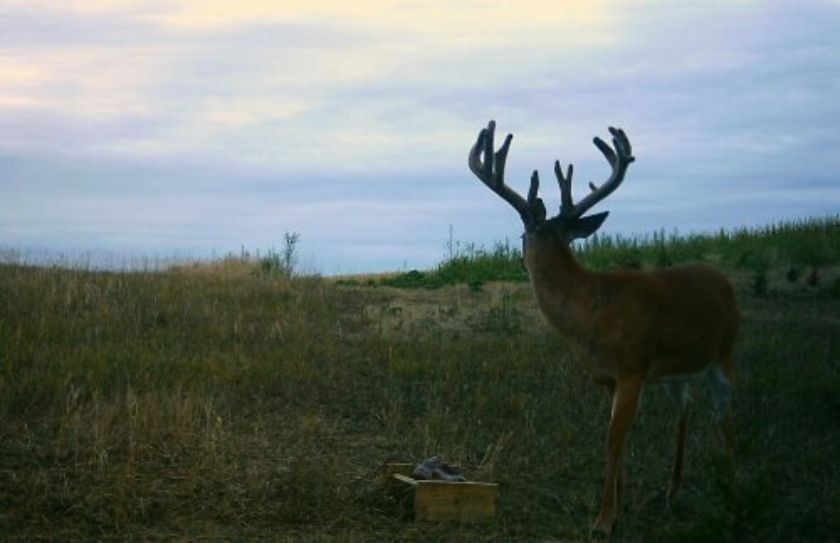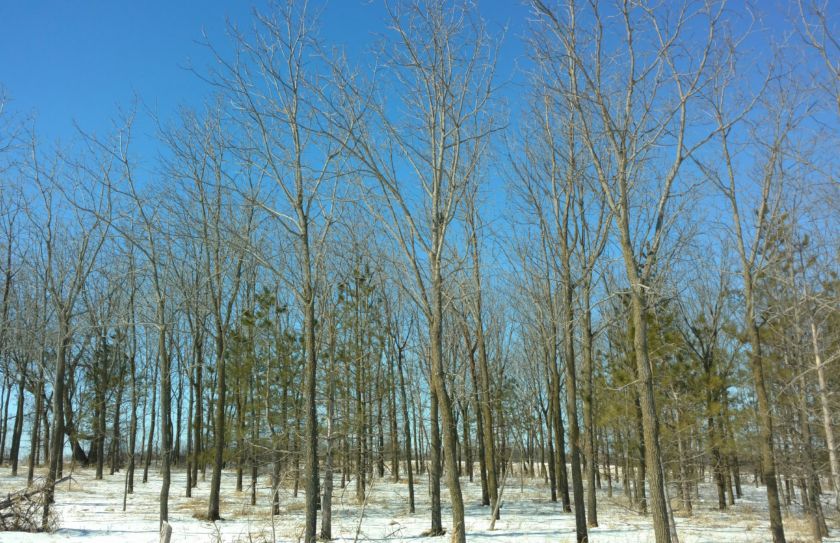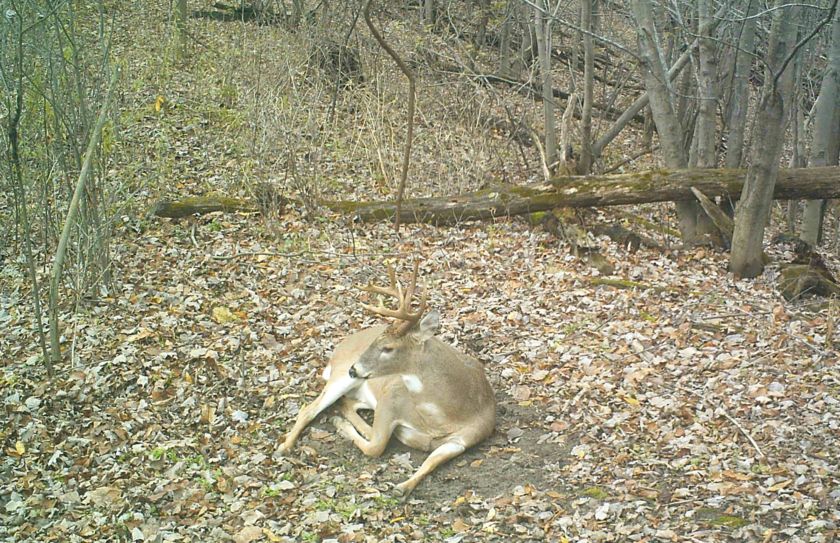Dancing fawns, fat does and exploding antlers are all great, but do your habitat improvements last all deer season long? Any holes in your deer habitat improvements during the months of October, November and December can destroy your herd and hunting goals, so here are some tips to create improvements that last.
All Season Deer Habitat Improvements
Taking care of the local deer herd 365 days per year sounds like a noble goal, but folks, unless you have 500-1000 acres or more, that goal is merely a pipe dream. In fact, with 500-1000 acres, you will be lucky to garner the attention of even a portion ofthe local herd, for more than 6 months. While you can stand to have holes in your deer habitat game during the Winter, Spring and Summer, you can't afford to experience holes in your habitat offerings, during the hunting season.
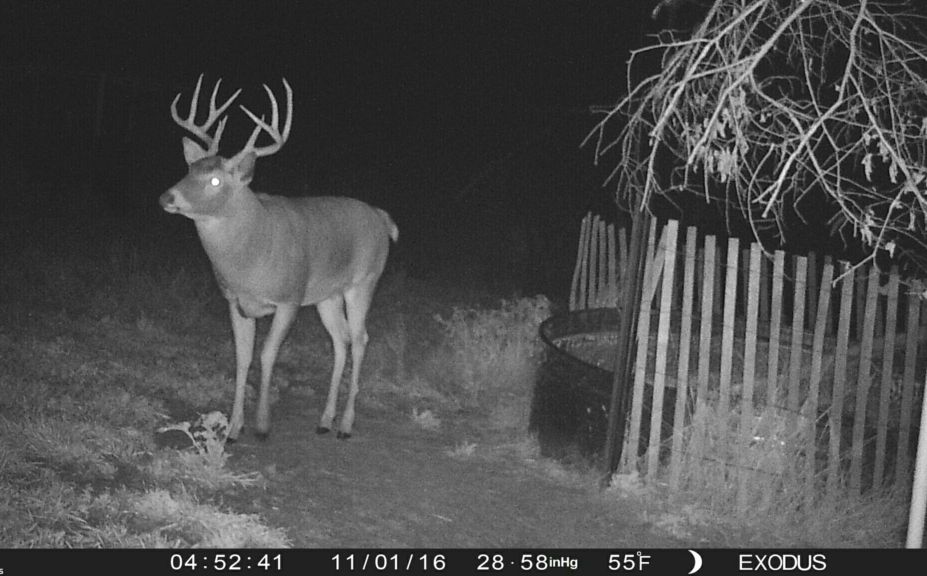
*While keeping your waterholes wet at all times may seem like an obvious strategy, don't understimate the negative conditioning for a mature buck that visits a dry waterhole only 2-3 times. For a complete set of waterhole strategies, make sure to visit my YouTube Channel.
The hunting season isn't just when target buck kills and doe harvests take place. The hunting season, is where herd goals, young buck protection and herd dynamics all take shape. No matter what your whitetail priority ultimately is (mine personally is "all of the above"), you will need to make sure that you do not experience any gaps in your deer habitat improvements for sometimes even a day or more, let alone the entire season. Here are 3 basic habitat improvement categories that you need to take care of every day of the season, if you want to build quality herd and hunting opportunities:
1. Food
Planting only corn will create holes in your season, as will soybeans. Both Corn and Beans will still limit your habitat improvement return, over the course of a full 3-4 month deer season. However, if your food source offerings include a diverse mix of greens, you can cover your herd's season-long needs without planting a single seed of corn or bean.
While corn and beans can be huge draws for several week windows each Fall, creating a quality herd and hunt all season long, hinges on your ability to establish an unpressured and unchanging, daily, afternoon deer food source movement. Filling the entire season with an adequate draw, is much better than hitting portions of your season with great draws. And don't be suprised if your goal of green adaquacy, turns into greatness, when you find the right combo for your local deer herd, in the potential combinations of brassica, peas, late planted beans, oats, rye, wheat and clover. Rest assured though, if you do not begin to establish a season-long food source attraction in late August or early September, the deer will leave or just simply never return in the first place, to the hunting season paradise you had hoped for.
2. Cover
Great Summer cover isn't necessarily great Fall cover. Fall cover needs include high stem counts and high browse quality. However, don't confuse high browse quality with high food value. Whitetails need woody browse, shrub tips, briars and other forms of quality browse in their daytime bedding areas. Consider these options much needed, scheduled "snacks", compared to their high quality afternoon, destination food sources. Just high quality browse and even acorns, are not enough in any way, to cover your habitat and herd's need for daily high quality food options. Addressing the above food recommendations and cover can combine to create the much needed 1-2 punch of season long habitat improvement needs, but just like food though, even the best of deer habitat cover options can be ruined in an instant.
Hunting pressure is the #1 demise of quality deer season improvements. No level of quality can overcome the effects of hunting pressure so making sure that your cover is both adequately stocked and safe, is critical to your success, all season long.
3. Hotspots of Defined Deer Movement
While keeping your waterholes wet may seem like an obvious strategy, don't understimate the negative conditioning for a mature buck that visits a dry waterhole for only 2-3 days. Does he come back any time soon? Our trail cam pics have proven that whitetails of all shapes, ages and sizes, typically take 2-3 weeks to include a waterhole back into their daily pattern. The same can be said for mock scrapes and where legal, bait and mineral stations. 2-3 weeks during the middle of the hunting season can literally be a lifetime for a younger buck that you are attempting to advance to the next age class, let alone an older buck you are targeting for harvest. It is critical to practice long term improvements, to make sure that the deer movements on your land stay tried and true, all season long.
- For waterholes, placing your favorite tank in the shade will insure low evaporation rates. However, make sure to use a tank of sufficient size! since the mid 2000s, Tanks of 10-50 gallons have been much too small, in my experience. While 70-80 gallons have been "OK" depending on the level of Fall rains, tanks of 100-110 gallons in size should be the minimum size for all season use. Even then...expect to fill them at least once during an average hunting season.
- Using rope and any other unnatural licking branch for a mock scrape may not work at all, so I have experienced that using branches and especially vines, are the natural touch that can be counted on. Vines seem to be the perfect material to use, because a 3/4" to 1" vine not only should last an entire season, but multiple seasons. While 2 years can typically be counted on, I am on the 3rd season for a few of my grapevine licking branches.
- While bait and minerals (where legal) can be a huge attraction for the entire hunting season, they can be a very difficult attraction to manage. The level of attraction is so strong and so precise, that any hunting pressure at all can spook deer for a great distance in any direction. Also, when bait and mineral stations run out, deer will cease to visit the location for several days or even multiple weeks. My favorite way to bait has been timed 55 gallon or larger, feeders. While I haven't personally baited in many years, that method greatly worked (and was legal to do so in MI), didn't run out for 30 days or more and still attracted deer without having to add human pressure. However, the best suggestion I can give for managing all season baiting effectiveness, is to strictly avoid the temptation of hunting directly over it!
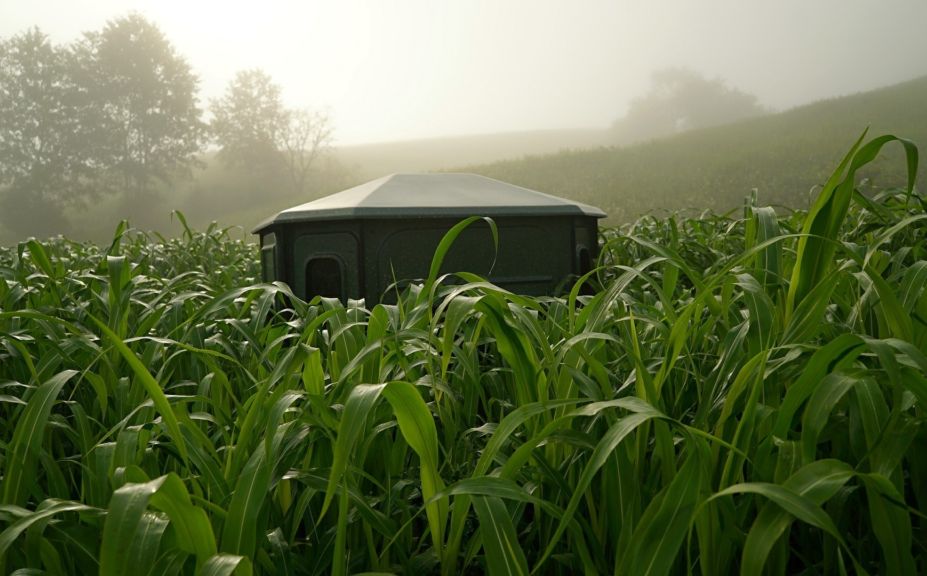
*Great food or cover isn't great deer habitat, unless it stays hunting pressure free! While I love hunting out of my Redneck Blinds, I still choose to hide them in Egyptian Wheator Switchgrass, to keep from spooking out my food plots or bedding areas.
Conclusion
Making sure that your deer habitat improvements last the entire hunting season may seem almost too basic to even write about, but in my experience very few fill that basic foundation of herd and hunting management. Do you? Because if you do not, you risk every whitetail goal that you may have, regardless of how valuable the rest of the year appears.
It's not that the rest of the year doesn't matter, however, if you haven't addressed filling the holes of deer habitat improvement for the entire hunting season first, you are still springing a gaping leak in the habitat bucket, that will ultimately doom your efforts. Try working fully on the base of your habitat improvements by completing your hunting season habitat improvements first, before prematurely moving on to the lower priorities of the rest of the year. I love Summer food plots, fat does, dancing fawns and huge antlers; but not at the expense of attaining true herd and hunting achievements.
